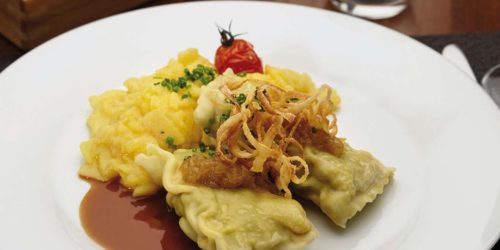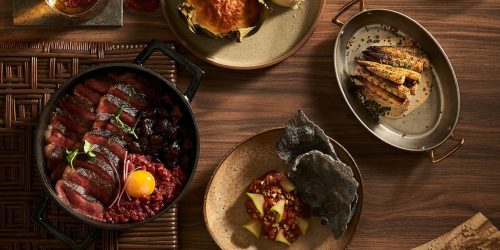My Culinary Odyssey in Munich’s Autumn Wonderland
Munich’s autumn culinary scene was a treasure trove waiting to be explored, with each restaurant and street food stall offering a different facet of the city’s charm. It wasn’t just about the food; it was about the ambiance, the history, and the people. Munich’s restaurants and street food stalls had not only catered to diverse palates but had also offered experiences that captured the essence of the season and the city.
The Iconic Hofbräuhaus Munich
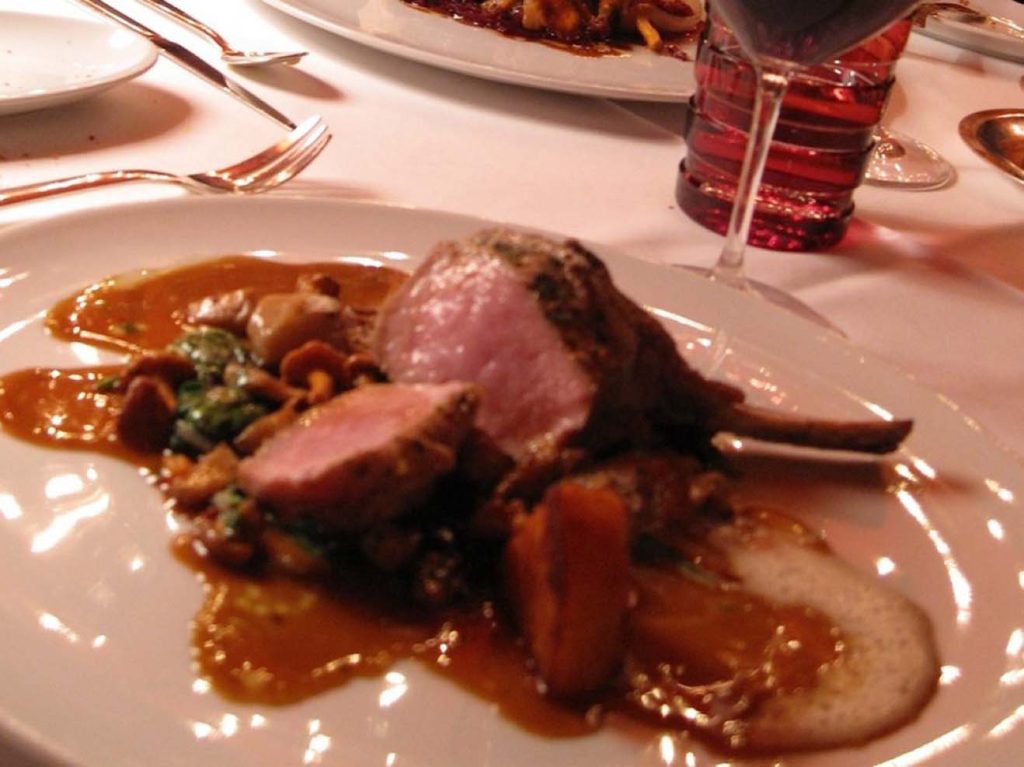
As I stepped through the arched doorway of Hofbräuhaus Munich, I felt a palpable connection to Bavarian tradition. The atmosphere was vibrant, filled with the jovial chatter of locals and tourists, all gathered around long wooden tables. The oompah band played traditional German melodies, setting the stage for an unforgettable culinary experience.
The ambiance was quintessentially Bavarian, with rustic wooden beams and an authentic, lived-in feel. The warm lighting cast a golden hue over the room, making it feel like a cozy haven from the brisk autumn weather outside. Rows of beer steins lined the walls, and the room buzzed with energy.
The menu at Hofbräuhaus offered a delightful range of Bavarian classics, but there was one dish I couldn’t pass up: the Schweinshaxe. I ordered this iconic pork knuckle dish, eagerly anticipating the culinary journey that lay ahead. The dish arrived, a masterpiece of Bavarian cuisine. The Schweinshaxe was a marvel of textures and flavors. The golden-brown, crackling skin shattered at the touch, revealing tender, succulent meat within. It was a delicious interplay of textures, with the crispy exterior yielding to a succulent, savory interior. The rich aroma of roast pork filled the air, and each bite was a delight for the senses. Paired with a stein of freshly brewed Hofbräu beer, the experience was nothing short of heavenly. The beer, cold and refreshing, complemented the Schweinshaxe perfectly, washing down the rich, meaty flavors and leaving a satisfying, lingering taste.
The service at Hofbräuhaus was friendly and efficient, though the bustling environment meant you had to be patient at times. But that was all part of the experience—the communal atmosphere, the camaraderie with fellow diners, and the hearty laughter shared over a meal.
The Schweinshaxe at Hofbräuhaus Munich was more than a dish; it was a cultural experience. It embodied the essence of Bavarian cuisine, and it was a testament to the mastery of traditional German cooking. The dish’s rich, satisfying flavors lingered long after the meal had ended, making it a culinary memory I would cherish.
Tantris – A Michelin-Starred Culinary Oasis
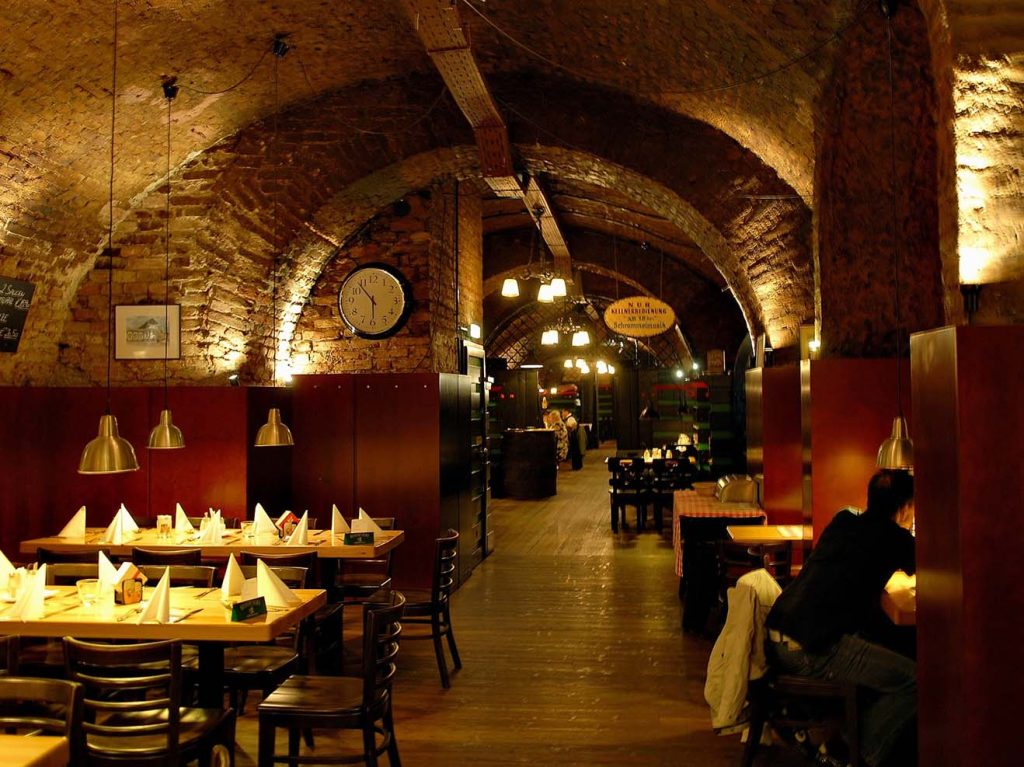
My next culinary adventure in Munich led me to Tantris, a Michelin-starred restaurant that promised a completely different dining experience. Located on Johann-Fichte-Straße, Tantris presented a striking contrast to the cozy and bustling atmosphere of Hofbräuhaus.
As I entered Tantris, I was immediately struck by the modern and artistic interior. The restaurant exuded an air of sophistication and elegance, with sleek lines, contemporary decor, and an abundance of natural light. The atmosphere was refined yet relaxed, and I could feel the anticipation building as I settled into my seat.
The menu at Tantris was a journey through culinary innovation, with dishes that were as much art as they were food. Each course was a carefully orchestrated masterpiece, a symphony of flavors and textures. I chose the Roast Duck with Szechuan Pepper, a dish that had intrigued me from the moment I read about it.
When the dish arrived, it was a sight to behold. The presentation was meticulous, with the duck breast glistening under a delicate glaze. The dish was adorned with vibrant, fresh herbs and edible flowers, creating a visual masterpiece. I couldn’t wait to dive in.
The first bite of the Roast Duck was a revelation. The skin was perfectly crisped to perfection, shattering at the touch to reveal the succulent, tender meat beneath. The taste was extraordinary, with a depth of flavor that surpassed my expectations. But what truly set this dish apart was the Szechuan peppercorn sauce. It was an explosion of flavors, a gradual crescendo of heat and tingling sensations that intensified with each bite. The numbing sensation of the Szechuan pepper combined with the rich, savory duck to create a culinary experience that was nothing short of sublime. It was a dance of flavors, a balance of heat and richness, and a testament to the creativity of Tantris’s culinary team.
The service at Tantris was impeccable. The staff were well-versed in the nuances of fine dining, providing attentive and knowledgeable service that enhanced the overall experience. It was clear that every detail, from the plating of the dishes to the timing of the service, had been carefully considered.
Tantris was more than a restaurant; it was a culinary oasis, a place where creativity and innovation met tradition. The Roast Duck with Szechuan Pepper was a dish that would stay with me for a long time, a culinary masterpiece that had left an indelible mark on my taste buds.
Viktualienmarkt – Munich’s Vibrant Food Market
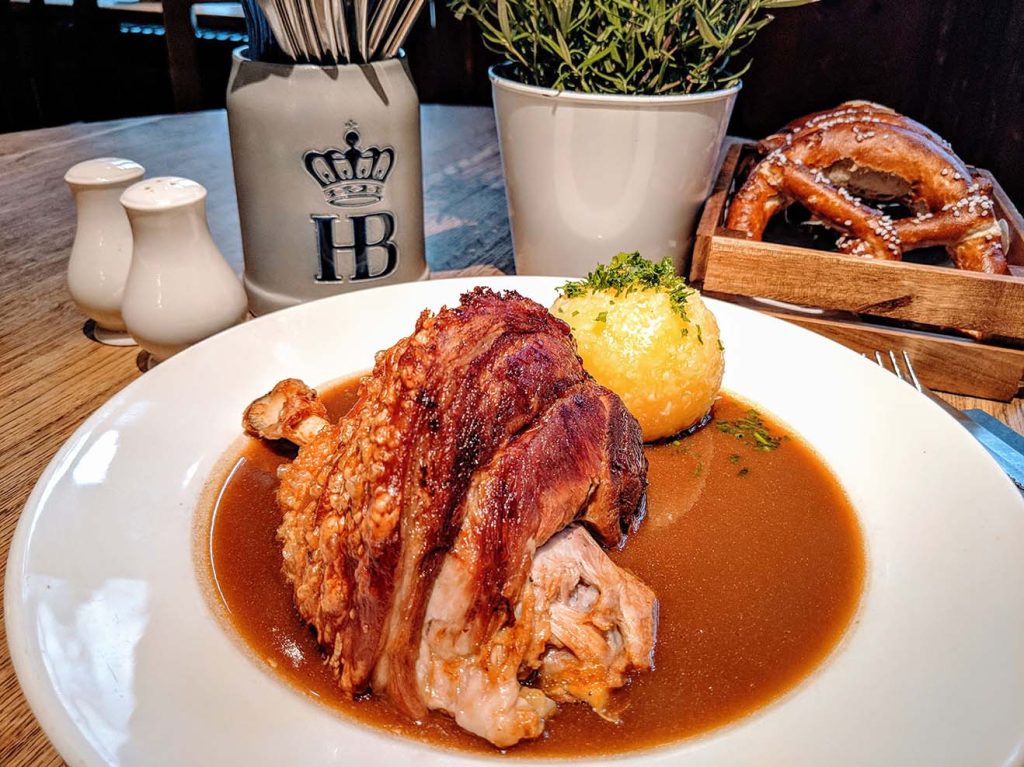
Viktualienmarkt, a bustling open-air food market located in the heart of Munich, was my next stop on this culinary journey. This vibrant market was a celebration of local flavors, a place where fresh produce, cheeses, meats, and snacks were on full display. The moment I entered the market, I was enveloped in a kaleidoscope of colors, sounds, and aromas.
The ambiance at Viktualienmarkt was nothing short of lively. Stalls selling a wide range of products lined the central square, and the market was abuzz with activity. It was a sensory overload, with the scents of fresh bread, grilling sausages, and aromatic spices filling the air. Locals and tourists alike roamed the market, tasting, shopping, and enjoying the convivial atmosphere.
The market offered a variety of street food options, and I decided to start with a giant pretzel and Weisswurst, a traditional Bavarian white sausage. The giant pretzel was a comforting delight. Warm and soft, it was the epitome of Bavarian bakery at its finest. The pretzel’s exterior had the perfect balance of crispness and softness, and each bite was a reminder of the joy of simple pleasures.
The Weisswurst, on the other hand, was a revelation. Served with sweet mustard, it was a traditional Bavarian specialty that combined flavors and textures in a unique way. The white sausage was flavorful and hearty, with a delicate blend of spices that made each bite a culinary delight. The sweet mustard provided a perfect contrast, adding a touch of tanginess to the dish.
The service at Viktualienmarkt was self-service, but it had a touch of local charm. It was a place where you could interact with the vendors, learn about the products, and immerse yourself in the local culture. The vendors were passionate about their offerings, and their enthusiasm was infectious.
Viktualienmarkt was a celebration of Bavarian culinary traditions and a place where the essence of Munich came alive. It was a place where you could taste the flavors of the region, where the local culture was on full display. The giant pretzel and Weisswurst were not just dishes; they were a taste of Munich’s soul, a reminder of the city’s rich culinary heritage.
Augustiner-Keller – Tradition Meets Flavor

My culinary journey through Munich continued with a visit to Augustiner-Keller, a classic Bavarian beer garden located on Arnulfstraße. This traditional establishment was a place where history met flavor, where the spirit of Gemütlichkeit, a sense of coziness and belonging, was palpable.
As I entered Augustiner-Keller, I was greeted by the charm of a classic Bavarian beer garden. The ambiance was inviting, with long wooden tables and benches that accommodated guests from all walks of life. The outdoor seating area, sprawling and shaded by chestnut trees, was perfect for enjoying the crisp autumn weather. It was a place where you could feel the warmth of tradition and the camaraderie of shared meals.
The menu at Augustiner-Keller was a tribute to Bavarian comfort food, and I couldn’t resist ordering the Schweinshaxe. This iconic dish was a hallmark of Bavarian cuisine, and I was eager to experience it in this traditional setting. The dish arrived, and I was immediately struck by its visual appeal. The Schweinshaxe was a sight to behold, a crispy, golden knuckle of pork that promised a world of flavors.
I took my first bite, and it was a revelation. The pork knuckle was cooked to perfection, achieving a delightful balance between a crispy, golden skin and tender, succulent meat. It was a culinary marvel, a testimony to the mastery of traditional German cooking. The taste was rich and satisfying, with the savory flavors of the meat complemented by the accompaniments of sauerkraut and potato dumplings. The sauerkraut provided a tangy contrast, while the potato dumplings added a hearty element to the dish. It was a meal that embodied the essence of Bavarian comfort cuisine, and each bite was a reminder of the joy of simple, hearty flavors.
The service at Augustiner-Keller was friendly and accommodating, embracing the tradition of Gemütlichkeit. It was a place where you could relax, enjoy good food, and engage in conversation with fellow diners. The communal atmosphere was a testament to the enduring appeal of Bavarian beer gardens.
Augustiner-Keller was a place where tradition met flavor, where history and culinary excellence coexisted. The Schweinshaxe was not just a dish; it was a cultural experience, a representation of Bavarian hospitality and comfort. It was a taste of Munich’s soul, a reminder that sometimes the most memorable meals are the simplest ones.
Ratskeller München – A Taste of History
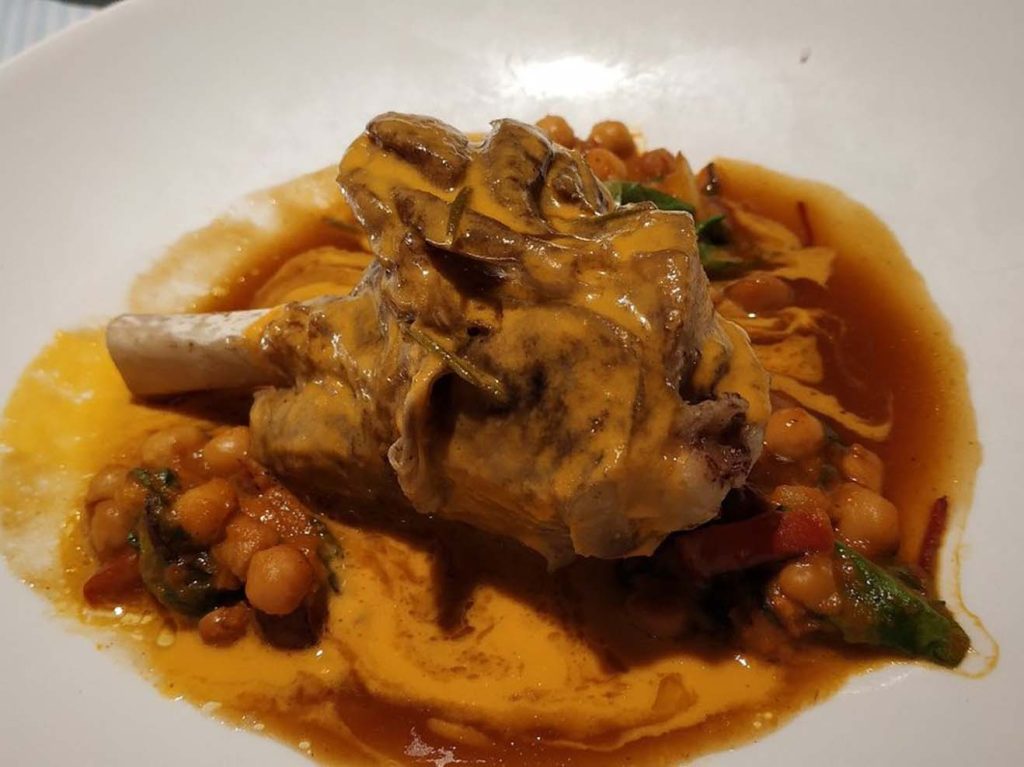
My culinary journey through Munich culminated in a visit to Ratskeller München, a restaurant located beneath the historic Town Hall. This Gothic-style cellar restaurant was a place where tradition and history merged to create a unique dining experience.
As I descended into Ratskeller München, I was immediately transported to another era. The stone arches, ornate decorations, and the dim, candlelit ambiance created an atmosphere that was steeped in history. The restaurant exuded a sense of old-world charm, and I felt as though I had stepped back in time.
The menu at Ratskeller München was a tribute to traditional Bavarian cuisine, and I couldn’t resist ordering the Sauerbraten. This pot roast dish had a tangy, flavorful marinade that piqued my interest. The dish arrived, and I was captivated by its presentation. The Sauerbraten was a work of culinary art, with tender, marinated meat that promised a world of flavors.
I took my first bite, and it was a revelation. The meat was incredibly tender, with a depth of flavor that was a testament to the slow, careful marinating process. The tangy sauce added a unique dimension to the dish, with a perfect balance of sweet and sour flavors. The accompanying red cabbage provided a hint of sweetness, while the potato dumplings added a hearty element to the meal. It was a culinary masterpiece that combined rich, comforting flavors with an intriguing balance of tastes.
The service at Ratskeller München was professional and attentive, adding a touch of elegance to the dining experience. The staff were well-versed in the nuances of fine dining and ensured that every detail was taken care of. It was clear that the restaurant’s commitment to excellence extended to every aspect of the dining experience.
Ratskeller München was more than a restaurant; it was a journey through history. The Sauerbraten was not just a dish; it was a taste of tradition, a reminder of Munich’s rich culinary heritage. It was a culinary experience that celebrated the city’s history and the enduring appeal of classic Bavarian cuisine.
My culinary journey through Munich’s autumn wonderland had been an incredible experience, a celebration of flavors, traditions, and the spirit of the city. From the iconic Hofbräuhaus to the Michelin-starred elegance of Tantris, the vibrant Viktualienmarkt, the cozy Augustiner-Keller, and the historic Ratskeller München, each dining establishment had offered a unique and memorable experience.
As I reflected on my culinary journey, I realized that Munich was not just a city; it was a culinary destination. Its diverse dining scene celebrated tradition, creativity, and the joy of sharing good food with others. The Schweinshaxe, the Roast Duck with Szechuan Pepper, the giant pretzel and Weisswurst, the Schweinshaxe at Augustiner-Keller, and the Sauerbraten at Ratskeller München were not just dishes; they were stories, memories, and a taste of Munich’s soul.
So, as I packed my bags and prepared to leave Munich, I carried with me the flavors, the memories, and the warmth of a city that had opened its heart and its kitchens to me. Munich’s autumn culinary wonderland had left an indelible mark on my palate, and I knew that I would return, time and again, to savor the tastes of this remarkable city. Munich had not just been a destination; it had been a culinary odyssey, a journey through flavors, traditions, and the soul of a city.
